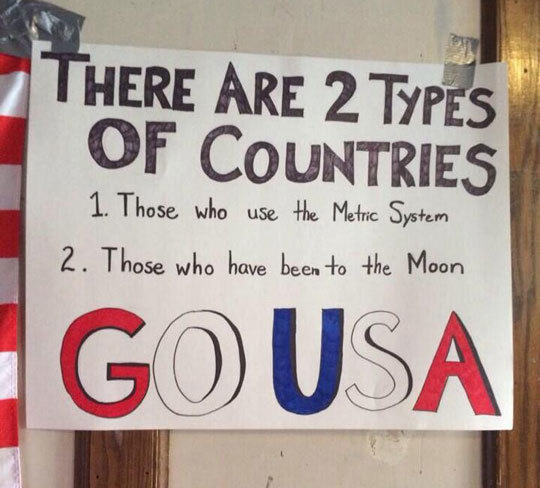Being from the old school, I was curious as to why the engineering standard reference for "moment", which has been termed "foot-kips" for over 200 years, somehow morphed into the nonsensical term "kip-feet." Who started this and why?
Navigation
Install the app
How to install the app on iOS
Follow along with the video below to see how to install our site as a web app on your home screen.
Note: This feature may not be available in some browsers.
More options
Style variation
-
Congratulations MintJulep on being selected by the Eng-Tips community for having the most helpful posts in the forums last week. Way to Go!
You are using an out of date browser. It may not display this or other websites correctly.
You should upgrade or use an alternative browser.
You should upgrade or use an alternative browser.
Terminology
- Thread starter Polecat
- Start date
- Status
- Not open for further replies.
SlideRuleEra
Structural
TLHS - In the US, metric has been "legal" since 1866, but was not on anybody's radar scope until the congress passed the "Metric Conversion Act" in 1975. It was widely rejected by the public and was a total flop. About the only thing I recall seeing was highway signs with distances given in both miles and kilometers. Since then, it has been slowly gaining traction. In college in the 1960's, we never did any engineering calcs in metric. Metric was used for some of the science classes, such as physics - but that was it.
![[idea] [idea] [idea]](/data/assets/smilies/idea.gif)
![[r2d2] [r2d2] [r2d2]](/data/assets/smilies/r2d2.gif)
![[idea] [idea] [idea]](/data/assets/smilies/idea.gif)
![[r2d2] [r2d2] [r2d2]](/data/assets/smilies/r2d2.gif)
Of course, those are the same guys that lost the Mars Climate Orbiter because of ... ;-)
TTFN
I can do absolutely anything. I'm an expert!
homework forum: //faq731-376 forum1529
TTFN
I can do absolutely anything. I'm an expert!
homework forum: //faq731-376 forum1529
- Thread starter
- #28
It looks like this thread sorta got away from the original question, but now that the metric system has been brought up, I'd like to weigh in on that as well.
The problem with that system is that you never know which version you are going to be confronted with. Around 1960 this committee got got together and decided that the MKS (meter, kilogram, second) system wasn't good enough, so they expanded it to what is now called the SI (System International).
So now, you may have a bending moment that you had converted into kilogram-meters, and you are suddenly confronted with this thing called kiloNewton-meters. Now you'd think that they would have just made 1 kiloNewton = 100 kilograms, but no, you've got that little thing called gravity acceleration in there (to make a kilogram of mass equal to a kilogram of force), so it ends up being 101.97 kilograms. And don't even get me started on expressing psf in kiloPascals (kPa).
The bottom line is, both systems are purely arbitrary as to where you start, such as King Henry I stating that a one yard measurement would be the length of his arm. We in the US would have been much better off by adopting a decimal system throughout. Instead of making a foot = 12 inches, it should have been 10 units of something, similar to what is used in surveying where a 100 ft tape is broken down into tenths of a foot.
Basically, your favorite system will be the one that you were brought up with and are used to.
The problem with that system is that you never know which version you are going to be confronted with. Around 1960 this committee got got together and decided that the MKS (meter, kilogram, second) system wasn't good enough, so they expanded it to what is now called the SI (System International).
So now, you may have a bending moment that you had converted into kilogram-meters, and you are suddenly confronted with this thing called kiloNewton-meters. Now you'd think that they would have just made 1 kiloNewton = 100 kilograms, but no, you've got that little thing called gravity acceleration in there (to make a kilogram of mass equal to a kilogram of force), so it ends up being 101.97 kilograms. And don't even get me started on expressing psf in kiloPascals (kPa).
The bottom line is, both systems are purely arbitrary as to where you start, such as King Henry I stating that a one yard measurement would be the length of his arm. We in the US would have been much better off by adopting a decimal system throughout. Instead of making a foot = 12 inches, it should have been 10 units of something, similar to what is used in surveying where a 100 ft tape is broken down into tenths of a foot.
Basically, your favorite system will be the one that you were brought up with and are used to.
Going back to the original direction of this stream, our company primarily uses in-kips for moments. I probably see stuff both ways, and don't know that I ever thought much about it. Torque is just a moment applied about an axis in line with the overall length of the member.
- Status
- Not open for further replies.
Similar threads
- Locked
- Question
- Replies
- 3
- Views
- 2K
- Locked
- Question
- Replies
- 9
- Views
- 469
- Replies
- 25
- Views
- 996
- Locked
- Question
- Replies
- 11
- Views
- 2K
- Locked
- Question
- Replies
- 22
- Views
- 1K


![[ghost] [ghost] [ghost]](/data/assets/smilies/ghost.gif) Ya
Ya